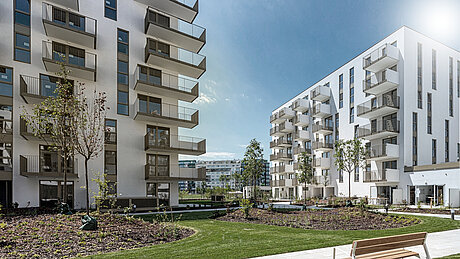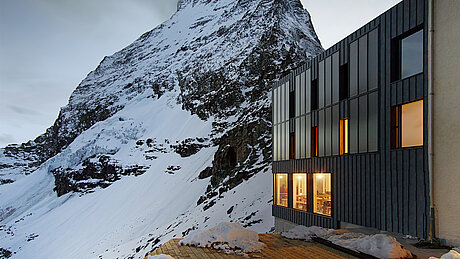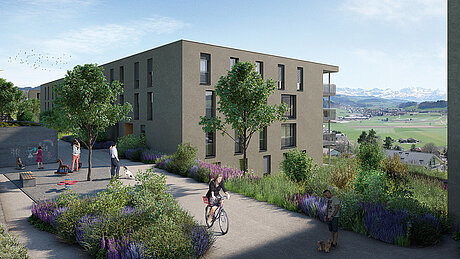
Walls and columns
Walls and columns

A great deal of energy is lost via thermal bridges due to the detailing of connections between walls and columns. Condensation and mould that forms at these points often leads to structural damage. The Schöck Sconnex® thermal insulation element provides permanent direct thermal insulation at these points.
Concrete formwork for the perfect frame
Schöck Signo® stop-end panels are used instead of conventional concrete formwork made of timber or polystyrene.
Vertical thermal bridge challenge
The high thermal conductivity of reinforced concrete and also the need for correct installation of reinforcement in reinforced concrete walls frequently detract from their outstanding structural and visual characteristics. A great deal of energy is lost via thermal bridges at reinforced concrete walls and columns, especially at the interfaces between these cold components and warm parts of the building. This has a negative impact on the indoor climate and can also lead to structural damage.
Until now, using flank insulation was the only way to reduce heat losses and the risk of structural damage at reinforced concrete walls and columns. This is a much less effective and more costly method. The visual and design limitations, changes of material on component surfaces and effective loss of space make the resulting solution extremely unfavourable and unsatisfactory.
Separate directly and permanently
The innovative product family Schöck Sconnex® features a new form of thermal insulation and provides an all-round solution for complex requirements. Sconnex® is specially designed for reinforced concrete walls and columns. It reduces thermal bridges at connections with floor slabs and slabs between floors and offers greater design freedom and potential cost savings.

Vertical thermal bridges.

Schöck Sconnex®
A great deal of energy is lost via thermal bridges due to the detailing of connections between walls and columns. Condensation and mould that forms at these points often leads to structural damage. The Schöck Sconnex® thermal insulation element provides permanent direct thermal insulation at these points.

Concrete formwork
for building the perfect frame.

Schöck Signo®
Schöck Signo® stop-end panels are used instead of conventional concrete formwork made of timber or polystyrene. This formwork method offers a high-quality edging when manufacturing prefabricated concrete balconies, floor slabs, walls and stairs at the precast plant.




